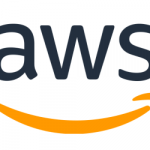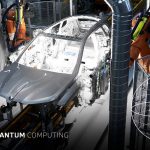IBM announces expanded Quantum Roadmap; IBM Diamond Sponsor & Keynote at IQT-San Diego Quantum Enterprise May 10-12

(HPCWire) IBM issued an extensive and detailed expansion of its Quantum Roadmap May 10 that calls for developing a new 1386-qubit processor – Kookaburra – built from modularly scaled chips, and delivering a 4,158-qubit POC system built using three connected Kookaburra processors by 2025. Kookaburra (Australian Kingfisher) is a new architecture that IBM says will “leverage three pillars: 1) robust and scalable quantum hardware; 2) cutting-edge quantum software to orchestrate and enable accessible and powerful quantum programs; and 3) a broad global ecosystem of quantum-ready organizations and communities.” IQT-News here summarizes the always-excellent John Russell and his discussion of IBM’s expanded Quantum Roadmap.
The announcement was timed to coincide with the start of IBM’s Think 2022 conference.
The revised roadmap still includes delivery of previously-announced single-chip 433-qubit Osprey processor this year and 1121-qubit Condor processor next year, but introduces newly-architected processors intended for use in multi-chip modules, starting with a 133-qubit (Heron) processor in 2023, a 408-qubit processor (Crossbill) and 462-qubit processor (Flamingo) in 2024, and leading to Kookaburra in 2025. Besides hardware improvements, IBM discussed key software advances and introduced its broad concept of a quantum-centric supercomputer leveraging both classical and quantum technology.
Jay Gambetta, IBM Fellow and vice president, quantum computing, delivered the expanded IBM vision in a blog post:
“We aren’t just thinking about quantum computers, though. We’re trying to induce a paradigm shift in computing overall. For many years, CPU-centric supercomputers were society’s processing workhorse, with IBM serving as a key developer of these systems. In the last few years, we’ve seen the emergence of AI-centric supercomputers, where CPUs and GPUs work together in giant systems to tackle AI-heavy workloads. Now, IBM is ushering in the age of the quantum-centric supercomputer, where quantum resources — QPUs — will be woven together with CPUs and GPUs into a compute fabric. We think that the quantum-centric supercomputer will serve as an essential technology for those solving the toughest problems,” wrote Gambetta.
In keeping with its steady hardware advances, IBM says it will raise its Quantum Volume score (performance benchmark) from 256 to 1024 this year and also increase the highest CLOPS (circuit layer operations per second) from 2.9k to 10k, noting that faster processing should permit incorporation of more error mitigation measures. The QV benchmark, developed by IBM, has been used by others. For example, Quantinuum recently reported achieving a QV of 4096.
Hardware advances, of course, are insufficient to drive IBM’s vision forward. Gambetta’s blog spends equal time on software plans. Broadly, the idea is to develop tools that help shield developers and users from the underlying complexity of quantum computing hardware. It’s an idea that’s shared by virtually everyone in the quantum community, and IBM has framed this concept as Quantum Serverless computing.
BM has long been an active participant in building out the needed quantum software ecosystem. Its Qiskit programming framework suite, now open source, has steadily gained wider use. Gambetta noted, “different users have different needs and experiences and we need to build tools for each persona: kernel developers, algorithm developers, and model developers.” He singled out three specific targets for software advancement: dynamic circuits; Qiskit primitives; and circuit knitting.
IBM has ambitious software goals. Gambetta says it will begin prototyping quantum software applications for users hoping to use Qiskit Runtime and Quantum Serverless to address specific use cases. “We’ll begin to define these services with our first test case — machine learning — working with partners to accelerate the path toward useful quantum software applications,” he wrote. “By 2025, we think model developers will be able to explore quantum applications in machine learning, optimization, finance, natural sciences, and beyond.”
Sandra K. Helsel, Ph.D. has been researching and reporting on frontier technologies since 1990. She has her Ph.D. from the University of Arizona.























